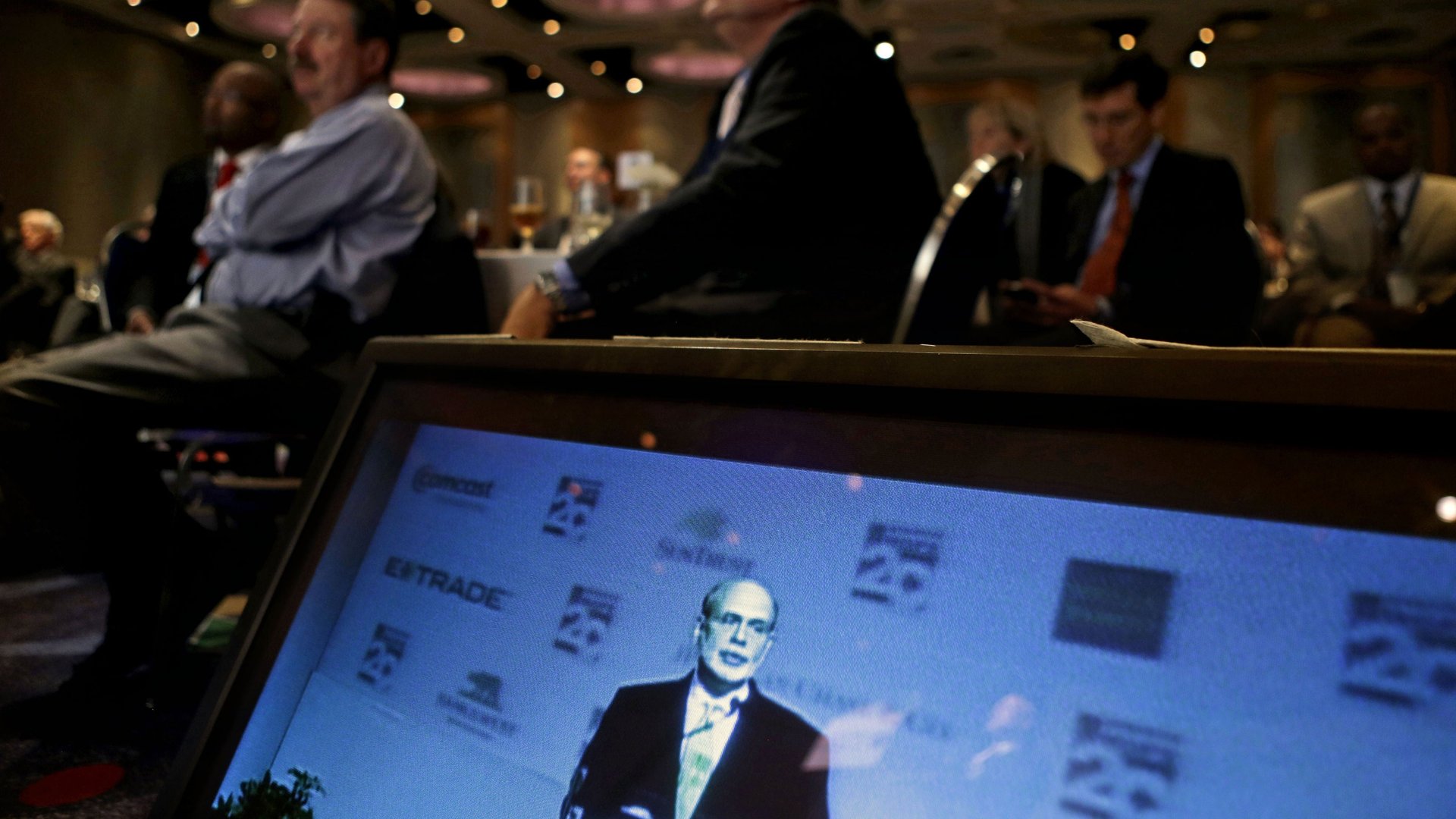The Fed is starting to get antsy about its ultra-easy monetary policy
The US Federal Reserve has held interest rates incredibly low since late 2008, with the federal funds rate at or below 0.25%. It has taken unprecedented steps (like quantitative easing, or QE) to make money incredibly cheap for businesses, individuals, and banks. Until recently, most members of the Fed’s Open Market Committee (FOMC, which decides these things) have been adamant that, while these policies could do damage under other circumstances, they are necessary now to stimulate the economy.


The US Federal Reserve has held interest rates incredibly low since late 2008, with the federal funds rate at or below 0.25%. It has taken unprecedented steps (like quantitative easing, or QE) to make money incredibly cheap for businesses, individuals, and banks. Until recently, most members of the Fed’s Open Market Committee (FOMC, which decides these things) have been adamant that, while these policies could do damage under other circumstances, they are necessary now to stimulate the economy.
The most recent minutes from the FOMC suggest the mood is shifting. Although the Fed hasn’t said it will change anything, some members of the committee seemed hesitant about how long it should continue its program of QE, asset purchases meant to push banks out of holding safe securities and into lending. The current round of QE, unlike previous ones, is open-ended. Several committee members now argue that it should be curtailed well before the end of 2013, “citing concerns about financial stability or the size of the balance sheet.” Others suggested it continue at least until the end of the year.
Most interesting is not what the committee said but why. Numerous statements within the minutes suggest that the Fed is truly growing concerned about the unintended consequences of ultra-loose monetary policy on a long-term basis. For four years, Fed Chairman Ben Bernanke and his supporters have argued for more monetary easing, not less. Inflation, the dovish Fed argued, is not the problem right now; we need to do more to get the economy on the move. By all accounts, as my colleague Matt Phillips has reported, this policy has been effective so far.
But three-and-a-half rounds of QE later, Bernanke et. al. see an economy “moderately” on the move, as the housing market improves and unemployment falls. Several committee members now cite concerns about creating unseen bubbles and distortions in the markets, overburdening the Fed’s balance sheet, or even causing problems for the US Treasury in borrowing. Some quotes (our emphasis):
With regard to the possible costs and risks of purchases, a number of participants expressed the concern that additional purchases could complicate the Committee’s efforts to eventually withdraw monetary policy accommodation, for example, by potentially causing inflation expectations to rise or by impairing the future implementation of monetary policy. Participants also discussed the implications of continued asset purchases for the size of the Federal Reserve’s balance sheet. Depending on the path for the balance sheet and interest rates, the Federal Reserve’s net income and its remittances to the Treasury could be significantly affected during the period of policy normalization. Participants noted that the Committee would need to continue to assess whether large purchases were having adverse effects on market functioning and financial stability.
This hawkish stance extends to long-term interest rates, which could eventually hurt savers and push investors into unnecessarily risky assets.
A few participants, observing that low interest rates had increased the demand for riskier financial products, pointed to the possibility that holding interest rates low for a prolonged period could lead to financial imbalances and imprudent risk-taking. One participant suggested that there were several historical episodes in the United States and other countries that might be used to build a better understanding of the financial strains that could develop from a long period of very low long-term interest rates.
In other, shorter words, committee members are worried that prolonged easy money might get the economy addicted; that it will put a strain on the Fed’s own finances; and that it will encourage moral hazard. (That mystical reference to “historical episodes” might be a warning about Japan’s “lost decade” in the 1990s, or US stagflation in the 1970s.) We’ve talked about this before, and tons of economists have been warning about the unintended consequences of QE or low interest rates for years. That the Fed is now discussing it, however, suggests that these concerns may now be more pressing. It also suggests that this could be the beginning of the end for easy monetary policy in the US.